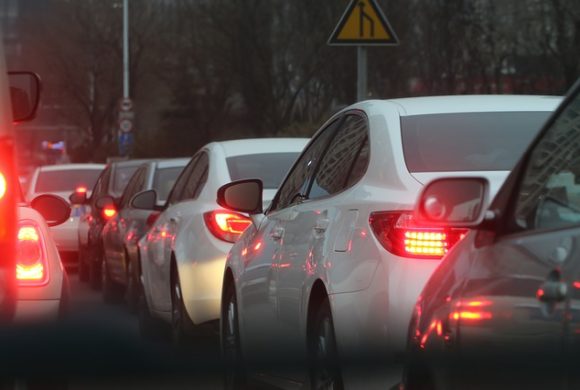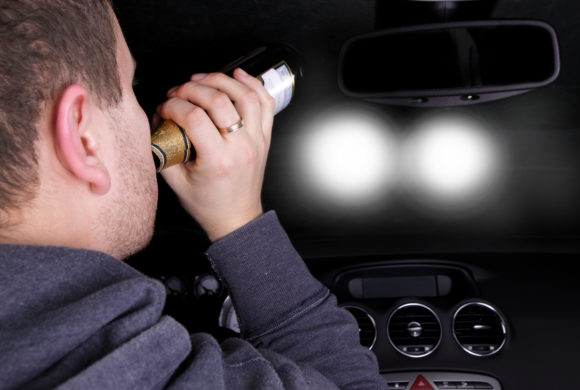
by Queener Law | May 8, 2018 | Auto Accident, Tennessee
In Tennessee, some accidents are caused by tires separating from vehicles on the highways that then crash into other cars. While these types of accidents are rare, some motorists are seriously injured or killed when their vehicles are struck by flying tires. Tires may separate from vehicles because their lug nuts have not been tightened enough by tire mechanics when they change the tires on the vehicle. They may also separate when the mechanics apply too much torque when they are replacing the tires, weakening the lug nuts and causing them to fail.
Dangers of Tire Separations
When tires fall off of vehicles while they are traveling on the highways, they may fly through the air and collide into other vehicles. These car accidents are sometimes deadly. In a recent case in Nevada, two cousins were killed when a tire separated from an SUV that was traveling in the opposite direction on Interstate 95. The tire crashed through the windshield of the vehicle in which they were passengers, killing them both. An engineer with MFA Forensics states that there are around 50,000 tire separations each year, and the incidents are underreported. This makes it difficult to determine the pervasiveness of the problem.
What Causes Tires to Separate?
Tires may separate from vehicles because of several maintenance issues. In 643 cases that happened between 2000 and 2003, 65 percent were caused by loose lug nuts, and 26 percent were caused by wheel bearing failures. Nearly all of the cases could have been prevented by proper maintenance. In a Canadian study, 83 percent of the reported wheel separations happened soon after the vehicles’ tires had been serviced.
Tires may separate when their lug nuts are tightened too much or not tightened enough. Mechanics that do not use the proper torque or calibrated tools when they change the tires may cause too much pressure to be applied to the lug nuts, causing them to sheer off while the vehicles are being driven. This may then lead to the tires flying off of the vehicles and striking other motorists who are traveling nearby. The mechanic shops that performed the improper maintenance may be liable to pay damages if people are killed or injured when the tires separate and fly off the vehicles.

by Queener Law | Apr 11, 2018 | Auto Accident, Colorado, Kentucky, Tennessee
Infotainment systems that use single-voice commands help older drivers keep their attention focused on the roads much better than multi-step systems or manipulating knobs on the dashboard. Single-step voice command systems help drivers by reducing the amount of visual distraction. With multi-step voice command systems, researchers have found that as age increases, the systems become more distracting to the drivers. However, they found that single-command systems do not show a correlation between age and increased distraction.
Single-Command Voice Systems Safer
According to the Insurance Institute for Highway Safety, voice command systems are less distracting for drivers than infotainment systems that require people to glance at them or manually manipulate them. Researchers evaluated the effects that the characteristics of various interfaces had on drivers’ ability to focus and determined that those that used single-step voice commands impacted driver focus less than those that required multiple-step commands.
The researchers studied 80 drivers on Boston-area interstates between the ages of 20 and 66 while they made phone calls. Half of the drivers drove vehicles that were equipped with single-command systems while the other half drove vehicles that were equipped with multiple-step command systems. After the drivers were trained on how to use the infotainment systems, cameras were used to analyze the effects of using the systems.
The researchers found that for each 10-year increase in age, 3.7 more seconds were required for drivers to complete their calls with the multiple-step systems. Long glances away from the road lasting two seconds or more also increased by 0.4 percentage points. In the single-voice command vehicles, there was no corresponding increase in distraction with increasing age. Regardless of how old they were, the drivers that used single-voice command systems were able to keep their eyes on the road 85 percent of the time while they were making phone calls.
The findings indicate that installing single-voice command systems in vehicles that are owned by older drivers may help them to keep their attention focused on the roads. These systems may help older drivers avoid accidents that are caused by distracted driving.

by Queener Law | Mar 23, 2018 | Auto Accident, Tennessee
While there is always a risk of being involved in a car accident in Tennessee, there are certain times, days and months that carry much higher risks. When people know when the most dangerous times to drive are during the year, they can take added precautions to reduce the likelihood that they will be involved in automobile accidents.
The Most Dangerous Times to Drive
According to the Tennessee Highway Patrol, there was a total of 37,150 automobile accidents that happened on Fridays in the state in 2017, making it the most dangerous day of the week to drive. During the first quarter of 2018, there were 8,482 accidents that occurred on Fridays. In 2017, the most dangerous time of the day to drive was between 3 pm and 6 pm with 52,457 accidents occurring during those times. The greatest number of accidents happened in November in 2017, which had 19,043 collisions. Other months that also saw increased numbers of automobile accidents included December, October, May, and August. Each of these months had a little more than 18,000 accidents.
Why Are These Times More Dangerous?
There are several factors that make these times more dangerous for drivers. On Fridays, more people may be on the road to start their weekends. An increasing number of accidents may occur between 3 pm and 6 pm because of schools letting out and people commuting home from work. During the holidays, there is an increased number of people who are out shopping. The added congestion can result in more accidents.
Reducing Accident Risks
People can do several things to reduce their chances of accidents during periods of increased risks. They can always follow the traffic laws and remain alert. They should avoid engaging in distracting activities while they drive, and they should watch the behaviors of other drivers so that they can anticipate when they might suddenly do something unexpected. When there is ice or snow on the ground, people should drive slowly. Wet pavement should also lead people to slow down so that they can minimize the risk that they will hydroplane. People should never drive after drinking. While not all motor vehicle accidents can be avoided, following these basic steps may help to lessen the chances of injuries.

by Queener Law | Mar 5, 2018 | Auto Accident, Colorado, Kentucky, Tennessee
When motorists are driving dangerously because they are drunk, distracted or aggressive, these dangerous drivers should be reported to authorities right away. People who witness reckless drivers should maintain a safe distance from motorists who are driving dangerously. They should have a passenger call 9-1-1, or pull over to call the police themselves as soon as it is safe. Reporting dangerous drivers can help prevent accidents that could result in severe injuries or fatalities.
What to Do When There Is a Dangerous Driver
Calling the police is the best defense against dangerous drivers. When people see drivers who are weaving in and out of traffic, driving aggressively or driving while distracted or appear to be drunk, they should not attempt to follow the dangerous motorist. Doing so could make the situation worse. People should not take pictures of dangerous drivers or provoke them in any way because such actions could lead to road rage incidents. Instead, they should pull over to the side of the road and call the police. If possible, people should try to note the vehicle’s make, model, color, and license plate number. This information can be helpful for responding officers who are attempting to locate the vehicle. Witnesses should also take note of the approximate mile marker or other location indicators and the direction the dangerous vehicle is traveling so they can provide this information to the dispatcher.
People should only report those drivers whose actions are a threat to public safety. The 911 system should not be used to report simple traffic violations. When people witness problematic driving behaviors that are minor and that do not rise to the level of endangering others, they can opt to report what they see by calling the police non-emergency line.
Why Reporting Is Important
While some people may be hesitant to report dangerous drivers to the police, it is important to do so. In 2015, more than 3,400 people were killed and 390,000 were injured because of distracted drivers. During the same year, more than 10,265 fatalities and 290,000 injuries were caused by impaired drivers. If reports had been made, some of those accidents could have been prevented.

by Queener Law | Feb 13, 2018 | Auto Accident, Colorado, Kentucky, Tennessee
In reaction to distracted and inattentive driving, Mazda has patented a new driver assistance technology that would engage drivers to make the driving experience more fun. The idea behind the technology is that drivers may become bored while they drive, leading them to glance away from the road on their mobile devices or other electronics. The system would use cameras and sensors to determine when a driver was becoming inattentive and then actively engage the driver in order to draw his or her attention back to the road. Instead of artificial intelligence taking over the car, it would use things like speakers to amplify the engine noise or suggest alternate routes with curvier roads that would require people to keep their eyes on the road.
Mazda’s Driver Assistance Technology
The driver assistance technology that was recently patented by Mazda would encourage drivers to keep their focus on the roads by making the experience more fun. The technology would use cameras and sensory inputs to analyze when drivers were becoming inattentive or distracted by measuring reaction times and other factors. When the system senses that a driver is becoming inattentive, it will give tips to the driver about how to improve his or her driving skills. It might suggest ways to accelerate or to turn so that the driver has a better experience. The systems may also suggest more scenic routes that have curvy roads. This is because driving on these types of roads naturally forces drivers to pay more attention to what they are doing in order to remain safe. The technology also might be used to make the engine sound louder so they might be encouraged to slow down their vehicles.
The technology that has been patented by Mazda is only at the patent stage, and it is unclear whether the company has any plans to develop it. The system is an innovative way to tamp down driver distraction. Messages telling people not to text and drive have had little effect, so new technology that would focus on other aspects of the driving experience might be helpful to reduce driver distraction while increasing driver engagement.

by Queener Law | Jan 22, 2018 | Auto Accident, Tennessee
Economically disadvantaged people are much likelier to be killed in motor vehicle accidents than their more advantaged counterparts due to unsafe roads, inadequate safety features in older cars and hindered access to trauma care. This inequality between disadvantaged and wealthier people has grown over time. The largest decreases in deaths have happened among people who have the highest levels of education while the biggest increases in deaths have happened among people who are older than 25 and who have less than a high school diploma.
Fatalities Among Wealthy People Versus Poor
In a study that was published in the American Journal of Epidemiology, researchers found that motor vehicle fatalities overall fell from 1995 to 2010. However, the poor were much likelier to be the victims of traffic accidents than were people who were wealthier. In 1995, disadvantaged people were 2.4 times likelier to be killed in a traffic accident than people who were wealthier. In 2010, the inequality had increased. Poor people were 4.3 times likelier to die in crashes than people who had more money.
The inequality has also been found in Nashville. From 2008 to 2012, the rate of deaths for pedestrians who lived in areas in which more than 25 percent of the population suffered poverty was 12.6 deaths per 100,000 people. For people who lived in areas with between 15 and 25 percent poverty, the fatality rate for pedestrians was 8.6 deaths per 100,000 people. Nationally, people who lived in areas with less than 15 percent poverty had pedestrian fatality rates of 3.6 per 100,000 people.
The Problem
People who are poor may live in areas with poor road conditions and that have fewer crosswalks, streetlights and other safety features. They are also likelier to own older cars that do not have modern safety features installed in them. Their cars may also be cheaper vehicles that have poor crash test ratings. Finally, poor areas have fewer trauma centers, and poor people may not receive treatment quickly enough after their collisions.






